Discover the quirks of some of McMaster’s oldest and newest buildings
When McMaster’s Hamilton campus first opened its doors in 1930, it consisted of five buildings: University Hall, Hamilton Hall, Wallingford Hall, Edwards Hall, and the Refectory. These buildings were designed in the Collegiate Gothic style and inspired by universities such as Oxford and Cambridge.
The ornamental stonework featured on University Hall and Hamilton Hall is typical of the Gothic architectural style. These two buildings were designed by architect William Lyon Somerville. The carvings above the University Hall Arch (pictured) depict students wearing graduation caps.
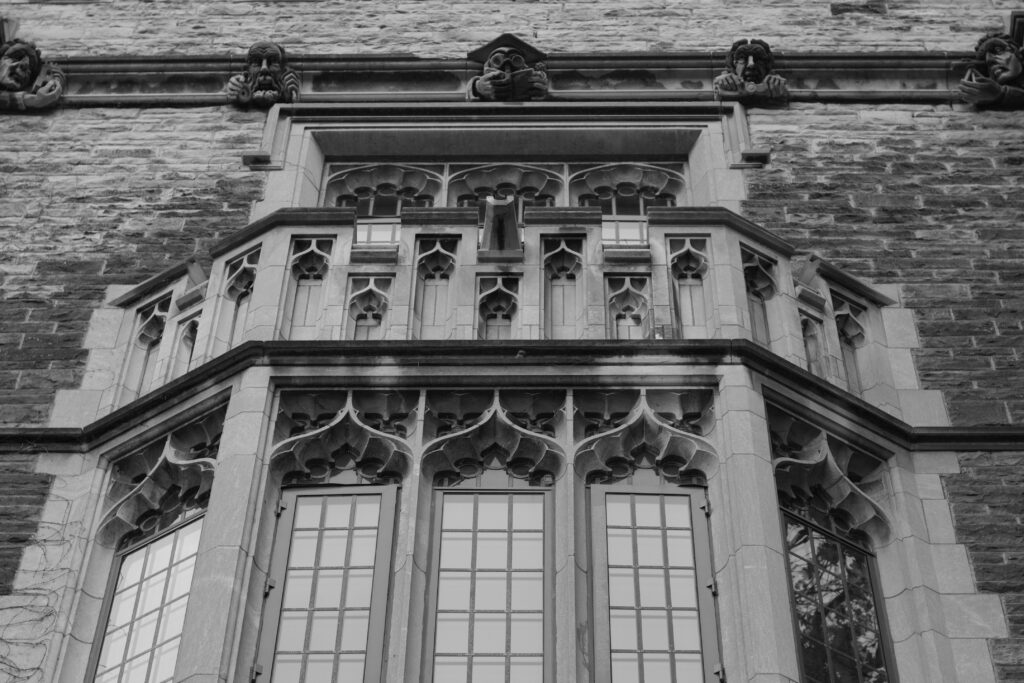
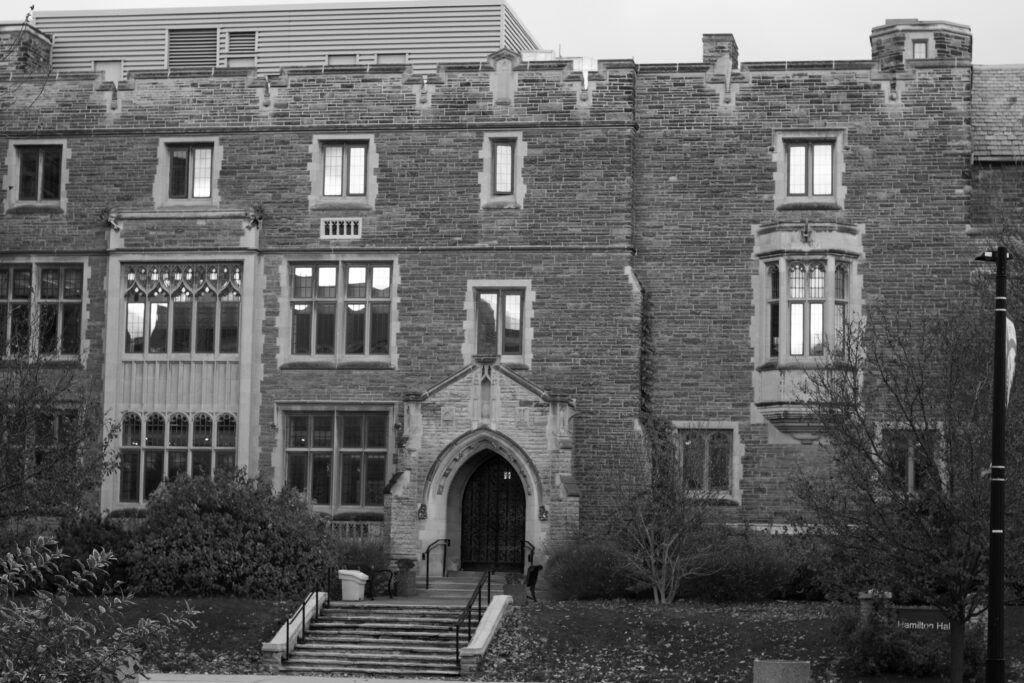
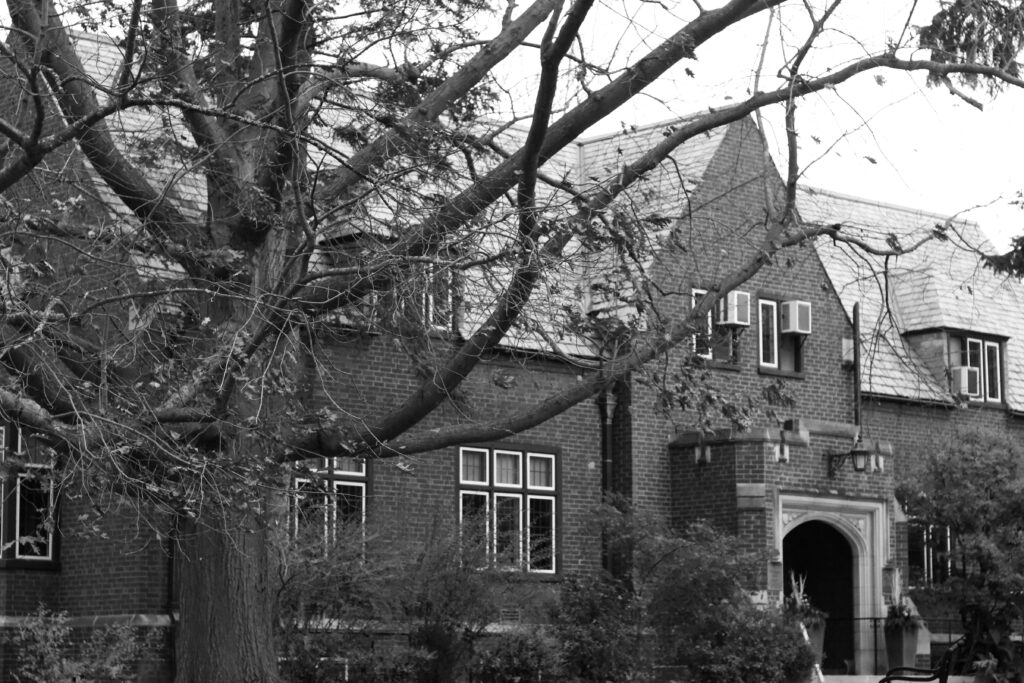
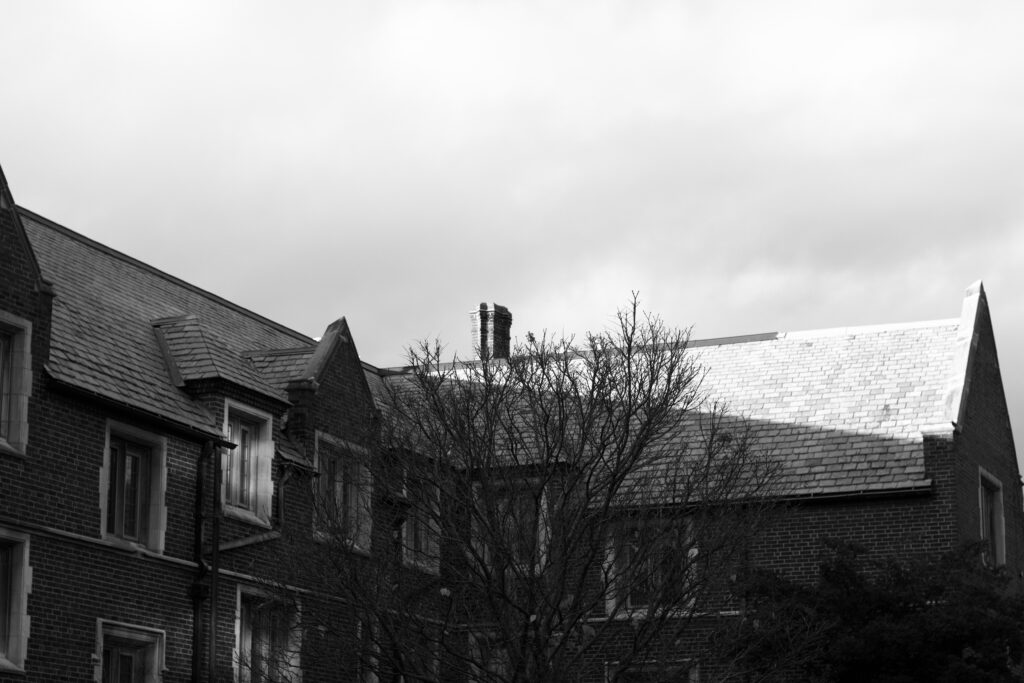
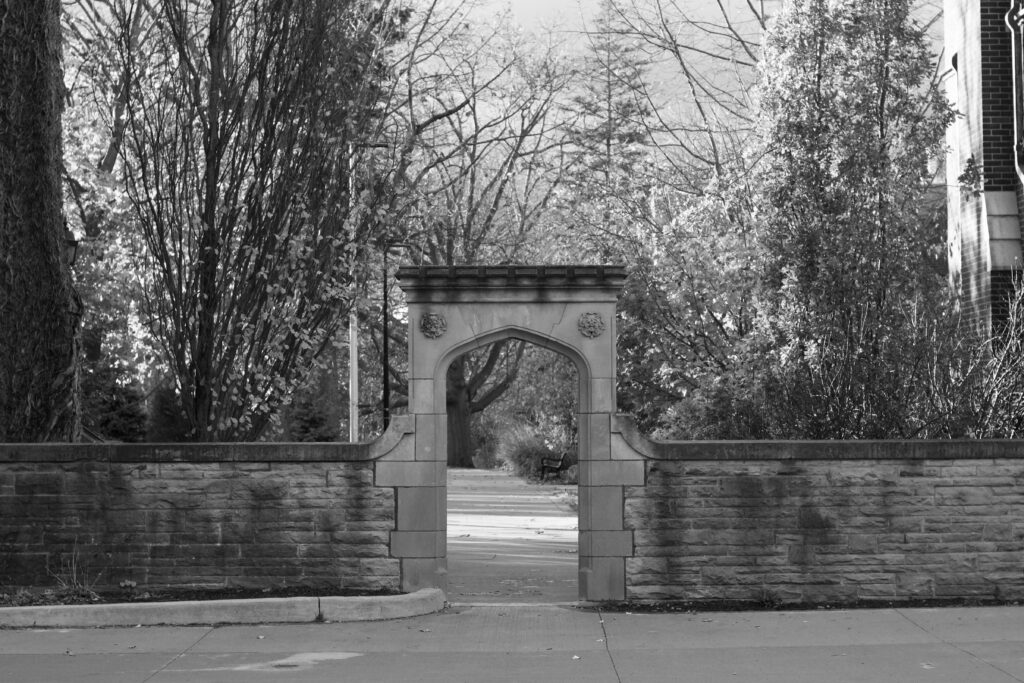
The McMaster Health Sciences Centre was designed by architect Eberhart Zeigler, with the intention of “never being finished.” The interior of the building was designed without the need for structural support walls, allowing for future modification.
This building was designed in the Brutalist architecture style that emerged in the mid-1900s and first opened in 1972.
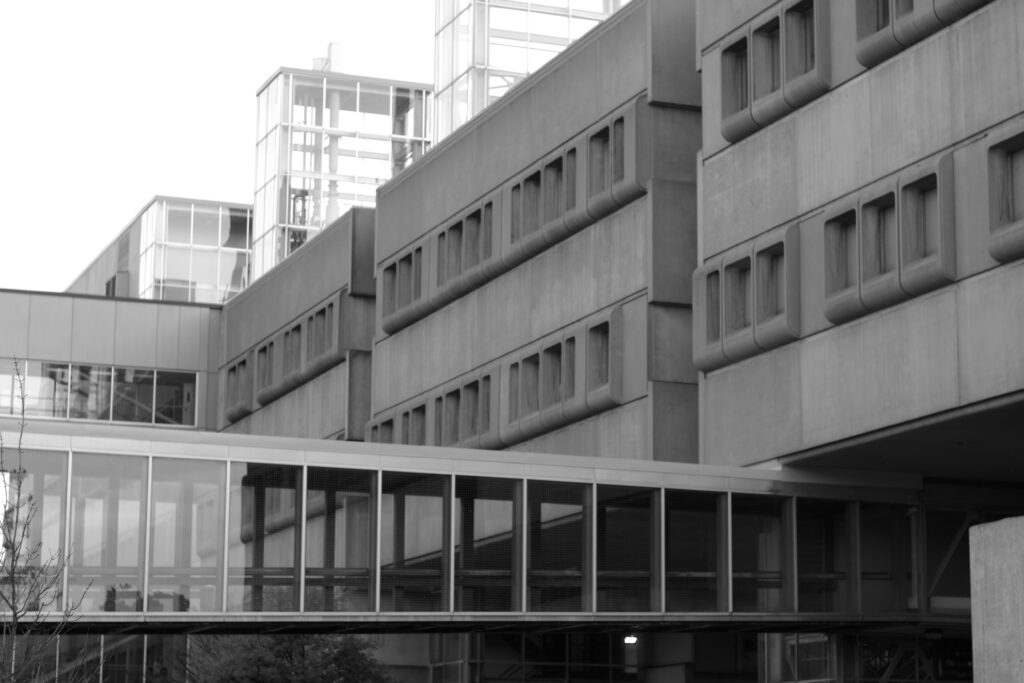
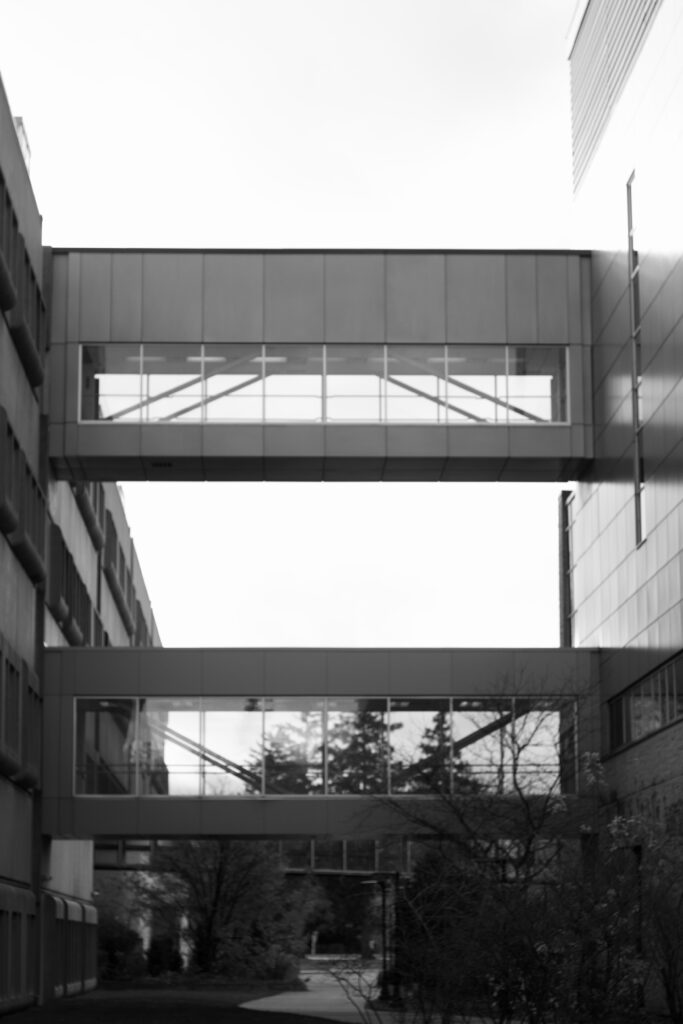
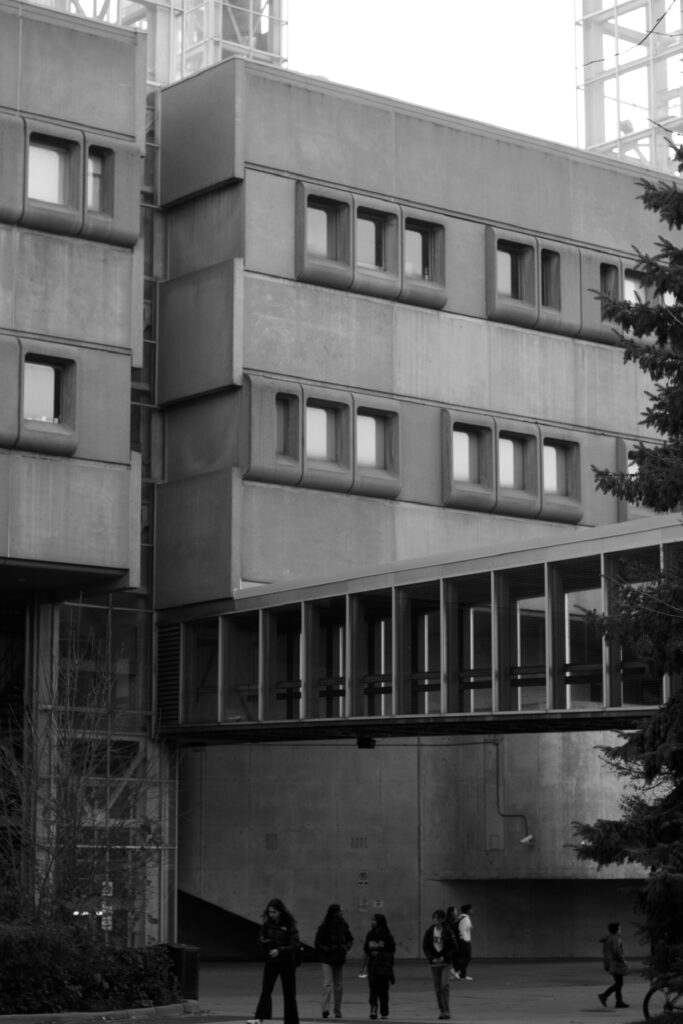
Among McMaster’s newest buildings are The Hub (2024), the Peter George Centre for Living and Learning (2019), and L. R. Wilson Hall (2017). L. R. Wilson Hall features a concert hall, blackbox theatre, interactive classrooms and an inner courtyard (pictured). The Peter George Centre was designed by architecture firm Diamond Schmitt. The four-storey atrium is naturally lit by a skylight and features a spiral staircase.
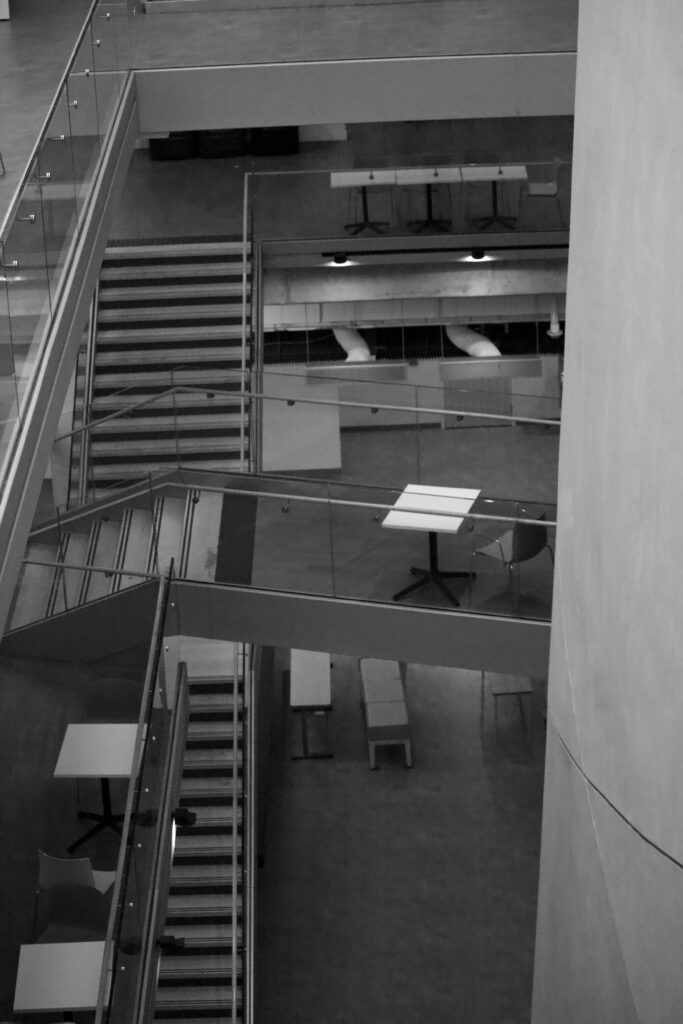
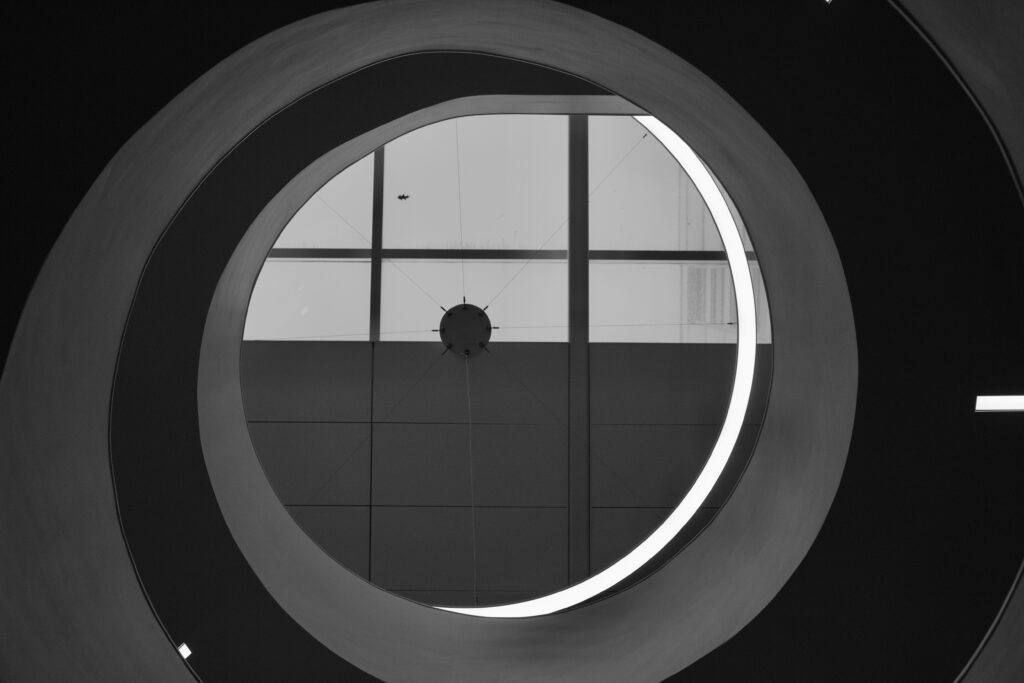
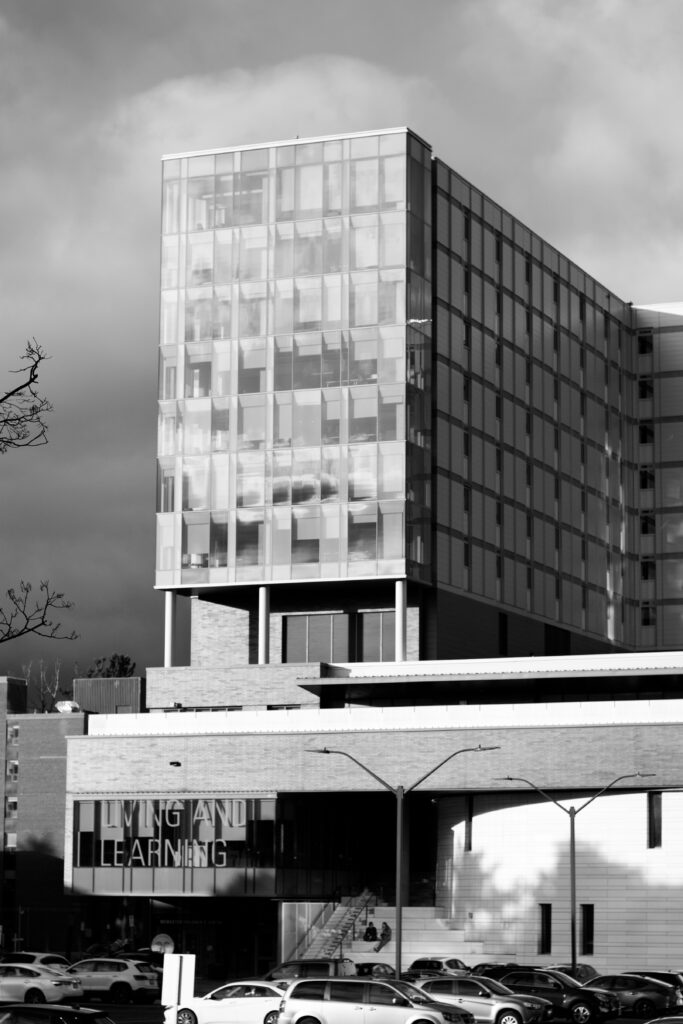
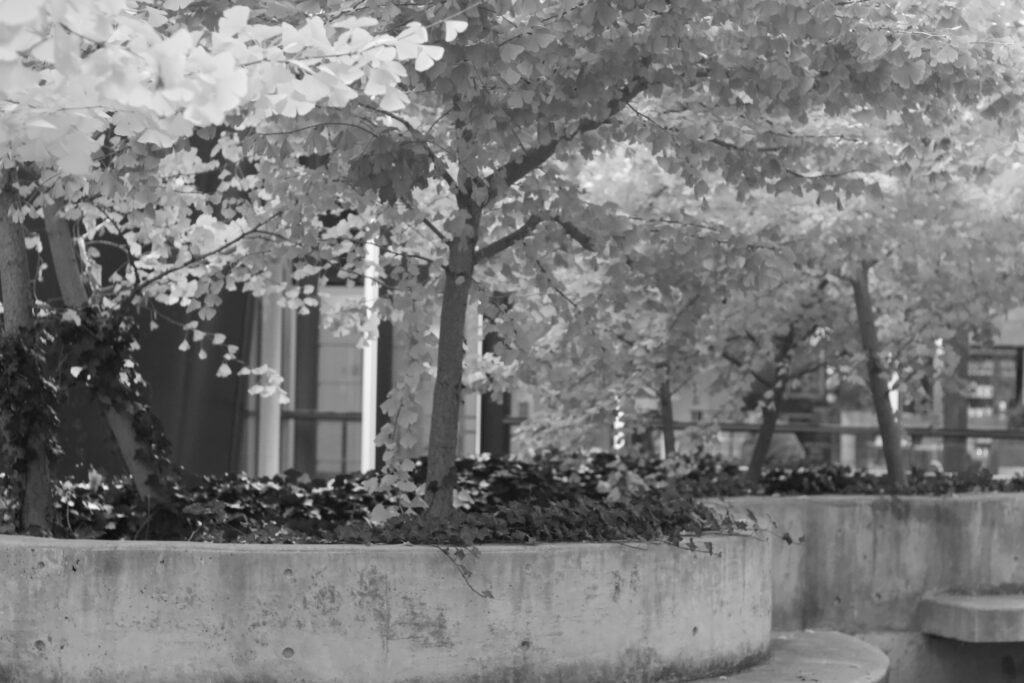
Better late than never.
A year after the originally proposed completion date, the L.R. Wilson Hall building is set to open in September 2016. When the project was announced, McMaster University said the building would open in September 2015. Despite the delay, the building is on budget for $55.5 million.

Ground was officially broken for the building on May 31, 2013, but a variety of factors led to a 12-month delay.
“[Wilson Hall] is probably one of the most complex and complicated construction projects the university has undertaken because the building itself is comprised of a number of unique pieces within it,” said Gord Arbeau, Director of Communications at McMaster.
The list of Wilson Hall features is impressive: it will house lecture theatres, classrooms, interactive teaching spaces, research centres, the McMaster Indigenous Studies program offices, a 350-seat professional concert hall, a black box theatre for a variety of performances, and underground parking.
“All of that under one roof is a very complicated and complex project,” Arbeau said of the building that will be shared by the social science and humanities faculties.
The main issue happened when the construction crew went below the surface.
“The water table was higher than we had thought. The 400-seat lecture hall is actually 50 feet below surface at its deepest point so that's a complicated construction process to build that piece of it. The delay is really around those issues,” Arbeau said.
Weather also played a factor in the delay. The winter of 2014 was so cold on some days Arbeau says that they had to cease operations as some construction actions could not be completed.
Come September and the return of students, Wilson Hall will open its doors for classes. It may not be completely ready for much more than teaching and learning, though.
“Our goal is to have [the building] fully operational. What might happen over the course of the month of September, we might have some faculty and some administrative staff moving in over the course of that as opposed to being for the first day of classes,” Arbeau said.
Arbeau reiterated that teaching and learning space would be operational for students and getting those rooms ready was the “priority.”
The five-floor building is going to be the headquarters for liberal arts students, housing staff from the humanities and social sciences faculties. Wilson Hall, named after McMaster chancellor Lynton (Red) Wilson and his $10 million donation, is 62,000 square feet in size. There will also be a student lounge for humanities and social science students among other amenities.
It is a welcome addition to campus. University enrolment has risen 5.1% from 2010 to 2015 and the squeeze on campus space has become more significant with each passing year. Part of the building's creation can be credited to work done years ago. There was a letter-writing campaign in 2010-11, led by then-MSU Vice-President (Education) Joe Finkle, where students wrote about the need for a space dedicated to liberal arts students on campus. McMaster expects to host a walkthrough opening event for Wilson Hall in September, with dates set to be determined.
With Wilson Hall nearing completion, the university looks ahead to its next major construction project: the Living and Learning Centre. While the LLC is similar in that it is a complex and multi-purpose building, the university said they do not anticipate any delays.
There will be “activity” in the construction area over the next few months.
Sophia Topper
Staff Reporter
Student artists have added a splash of colour to the Wilson Hall construction site. Their mural in progress is a part of the Spotlight on the Arts, a yearlong festival generic viagra buy usa run by the School of the Arts. Students are transforming the plain white boarding surrounding the construction site into murals depicting themes related to Hamilton’s blue collar history.
Inspiration came from the vibrant public art movement, with its associated vulnerability, mystery and public accessibility as important components to the modern movement.
The work “raises questions with community…in a different kind of context,” said Beth Marquis, a lead coordinator of the festival. The murals continue Spotlight on the Arts’ September theme of community.
“It’s a collaborative effort,” explained third-year Studio Art student Kirby Tobin. “The designs were all by our class…we each have a few panels to work on in pairs, but we’re all working on it.”
The chosen media are stencils, latex paint and wheat pasted images, which are being used to represent the reassembled remnants of the students’ past work.
The idea arose from preliminary discussions about the Wilson Building, and the hope was to create an “interesting art project that could engage the community, instead of just a practical fence,” said Marquis.
Carmela Lagense, assitant professor in the School of the Arts, volunteered to adopt the project, using it as an assignment in her Painting and Drawing class. The festival worked with Facility Services and the Department of Public Relations to gain approval for the project.
"I think this project represents everything Wilson Hall is going to be about," Laganse told the Daily News. "It's community-driven, collaborative and innovative."
“I really like the opportunity to work outside and interact with the viewers during the process; that's something new in terms of putting the work up,” said third-year Studio Art student Natalie Richard, a member of Lagense’s class.
“I wouldn't say we do public art of this sort often,” she said. “Our work is open to the public but this sort of space is a lot more inviting, especially since going to see art can be intimidating.”
“This kind of public art is a unique opportunity this year,” echoed Tobin. “I think this is possible as an extension of the effort to get the arts community at McMaster more recognized.”
The murals will be up as long as the boards are, but after that, their fate remains uncertain. Some hope to preserve the murals, but the mural’s ephemeral nature could be an asset. “[Street art] pops up and engages the community for a period of time,” said Marquis.
While the bulk of the murals are found on the boards facing Sterling Street, other classes have contributed to collaged prints on the side facing Forsyth Avenue, and the students have been given permission to use the remaining blank space for their work, and will continue depending on remaining time and material.

Come September of 2015, McMaster students are in for a treat. Thanks to a $45 million dollar grant from the provincial government and a $10 million dollar donation from retiring Chancellor Lynton (Red) Wilson, the L.R. Wilson Hall for Studies in Humanities and Social Sciences is finally breaking ground and is set to open in time for the 2015-16 academic year.
Although the building currently on site, Wentworth House, has yet to be demolished, at a project launch ceremony on Friday May 31, University faculty and government administration donned hard hats and wielded shovels to formally break ground for the building. Construction is scheduled to be in full swing by early July.
The proposed 62,000 square foot building has an extensive list of attributes, including an Indigenous Studies space and ceremonial area, a joint Social Sciences-Humanities student lounge, a 400 seat lecture hall and underground parking. Music and theatre students will be particularly enthused by the 350-seat concert hall and a versatile black box theatre that can be configured in a variety of ways to suit performance needs.
“We build a space not just for today or tomorrow, but to still be innovative 15 years from now,” said Dr. Charlotte Yates, Dean of Social Sciences at a community open house regarding the building on Monday May 27.
At only five floors tall, the Hall will still manage to encompass departmental office spaces, graduate research areas, seminar rooms and classrooms while being 100 per cent accessible and featuring transgender washrooms on every floor.
The structure itself is also going to be groundbreaking in its design. “We wanted this to be a green building, not only from a sustainability perspective, but also in terms of landscape,” explained Paul Cravit, President of CS&P Architects, and Project Lead on the Wilson building. This commitment involves tree preservation along Sterling and Forsyth Avenue, a garden level on the top floor of the building and a green roof.
In an effort to receive gold certification in the environmental LEED scoring system, the building will be equipped with low pressure plumbing, have bright windows to capitalize on sunlight, and be dimly lit at night.
The liberal arts centered space is the result of an initial letter writing campaign to lobby the government for arts funding. Joe Finkle, MSU VP Education 2010-2011, spearheaded the successful letter-writing campaign during his tenure. In 483 original, unique letters, liberal arts students expressed the need for a new academic and performance space dedicated to their specific needs, and sent them to local MPP Ted McMeekin. Years later, the fruits of Finkle’s and the arts students’ labour are finally becoming a reality.
The building represents the largest liberal arts donation McMaster has ever seen, and is the only arts-focused infrastructure to be funded by the provincial government in this round of financial allocations. Dean of Humanities, Dr. Ken Cruikshank, knows this investment to be worthwhile. “This building is going to change the way we learn,” Cruikshank promised.